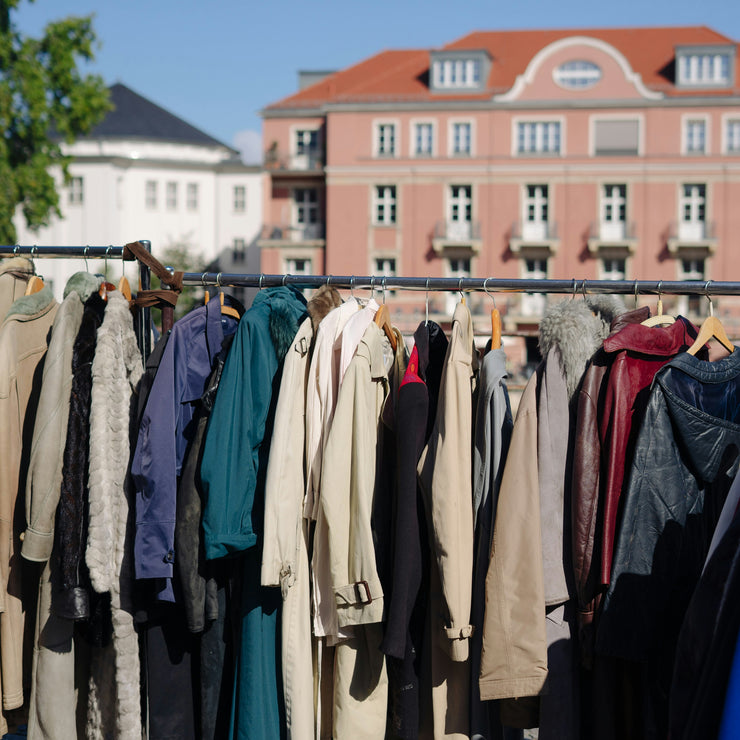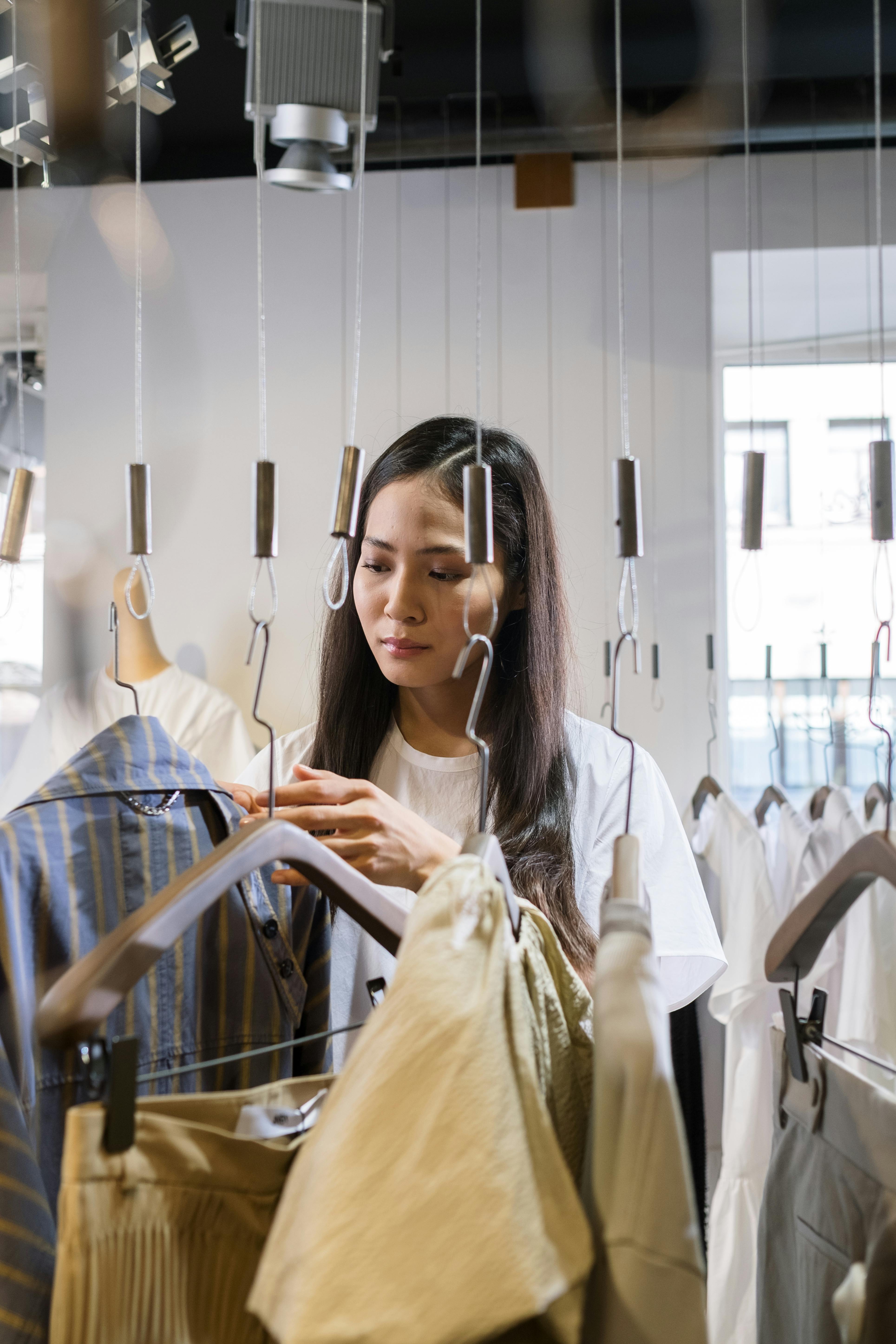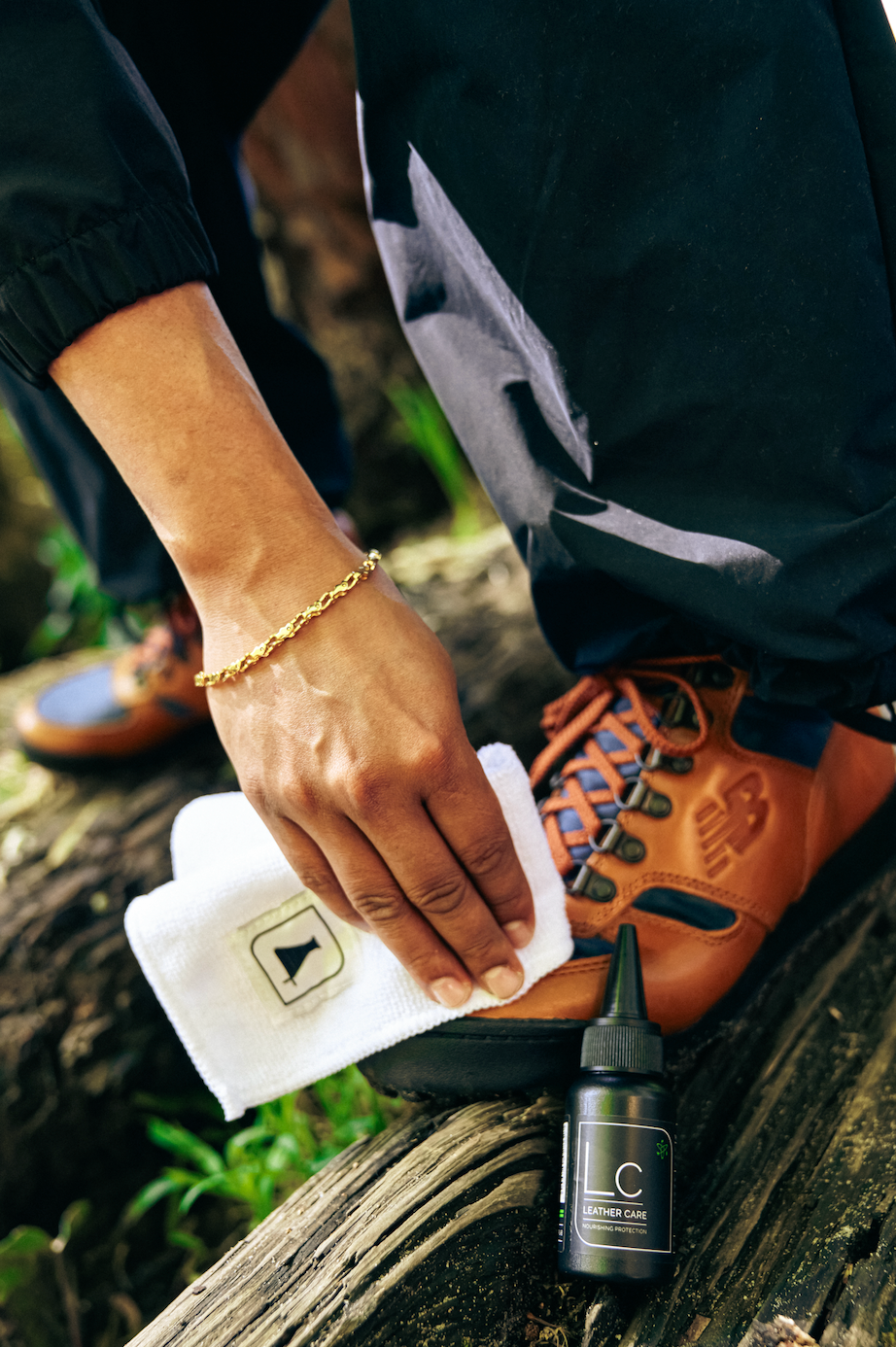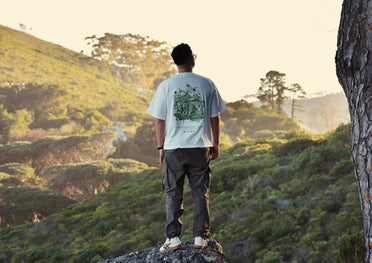A Guide To Navigating Trends When You're Trying to Be a Conscious Consumer
[ Story ]
Article

A love for clothing can be overwhelming and insatiable. With so many trends and choices passing our eyes at any given moment, and particularly in a fashion system that has proven to be so environmentally and socially harmful, it can feel as though nurturing our personal style is at odds with our values.
Navigating this constant flux of fashion and responsibility might leave many of us wondering how we can enjoy clothes and participate in our own style, while still making ethical choices that benefit both people and the planet? In this series, we have discussed many of the external, systemic ways in which sustainable fashion is making changes and strides towards a more ethically robust framework, and yet, it's important to remember that the ultimate power lies with each of us consumers.
Navigating this constant flux of fashion and responsibility might leave many of us wondering how we can enjoy clothes and participate in our own style, while still making ethical choices that benefit both people and the planet? In this series, we have discussed many of the external, systemic ways in which sustainable fashion is making changes and strides towards a more ethically robust framework, and yet, it's important to remember that the ultimate power lies with each of us consumers.
If the will to purchase sustainably and make ethical choices isn’t arising from consumers; then many of the innovations we’ve traced in Outside The LAB are somewhat distant, experimental attempts that are unlikely to ever reach their full potential. Without conscious consumer demand driving the shift, these innovations risk becoming niche solutions rather than widespread change agents. At the end of the day, our collective choices shape the industry, and it’s only through intentional purchasing habits and a deeper commitment to sustainability that these groundbreaking developments can truly transform the fashion landscape.


Our mission and intention is to inspire our community of conscious consumers who understand that style and sustainability can coexist. So, how do we bridge the gap between our desire for fashionable expression and the need for sustainability?
A strategy to consider is how we interact with the temporary trends; those moments that occur in the cultural zeitgeist that fade almost as soon as they appear. Discerning between fleeting fads and timeless pieces is essential for building a wardrobe that lasts, as trends often capture the moment but can quickly lose relevance, while classic pieces remain versatile and exciting for years. Understanding this difference can save us money, reduce waste, and help us cultivate a more sustainable wardrobe.
A strategy to consider is how we interact with the temporary trends; those moments that occur in the cultural zeitgeist that fade almost as soon as they appear. Discerning between fleeting fads and timeless pieces is essential for building a wardrobe that lasts, as trends often capture the moment but can quickly lose relevance, while classic pieces remain versatile and exciting for years. Understanding this difference can save us money, reduce waste, and help us cultivate a more sustainable wardrobe.
To assess the longevity of a trend, bookmark the pieces you’re interested in and vet their composition and origin; try to delay instant gratification and the allure of hype, and instead apply a short thought experiment; imagine said piece in your rotation, right now — how would you wear it, where would you wear it? Now, fast-forward five years: will you still reach for this piece, or will it feel outdated and neglected in the back of your closet? Is it really part of your overarching style? If the answer leans toward the latter, it’s likely a passing trend rather than a thoughtful addition to your wardrobe. When you’re centering your own personal style in your shopping choices, especially over hype; you’d be surprised how clear it can become when something is purely a trend, rather than something that is true to you and reflects your individuality.





Investing in quality fashion is critical for conscious consumption.
Well-made clothing, designed with careful attention to construction, lasts longer and reduces the need for frequent replacements — and honestly, you’ll feel better wearing it. Of course, there are economic barriers laid out across the industry and this is precisely why fast fashion is so tempting. If we can begin breaking the cycle of reliance on fast fashion a piece at a time (with investment pieces like jackets, or an item we constantly replace because we wear it so much) we can offer ourselves and the fashion landscape a meaningful shift with our participation as a consumer.
We are all about thoughtful decision-making rather than impulse buying — it's why Sneaker LAB is built on offering solutions to care for your most loved investment pieces. Circularity is a practice as much as it is a system, and circular thinking should have us considering everything we own, from its usefulness to the joy it brings to us.
Supporting local brands is another crucial aspect of conscious consumerism. When we purchase from local designers and businesses, we contribute to our community’s economy — your purchase, literally builds out the possibilities for your city to have a thriving industry that is intrinsically ethical, especially as local brands often have small production runs, and many of these brands going up against the fashion fashion offerings, hold ethical labour practices and transparency in sourcing as part of their core values.
Thrifting has had a major revival and as trend forecast giant, WGSN, have pointed out, “the global secondhand apparel market is set to grow three times faster* than the global apparel market, with Gen Z leading adoption. Coupled with the cost-of-living crisis, Gen Z will continue to power the thrift movement in search of more affordable alternatives in the year ahead. This generation is looking for clothes they can’t find in current collections: WGSN Barometer data reveals that 40% of Gen Z buy pre-loved clothes because they can’t find the style anymore across traditional retailers.”
A consumer shift of this scale is a powerful reminder of what it means to be an influential demographic, and the growing desire to combat fast fashion's negative environmental impact while seeking unique and expressive styles that stand out from mainstream offerings. Buying second-hand and vintage clothing offers numerous benefits that extend beyond personal style — with garments receiving a second chance and an extended life cycle. Also, it tends to be so much more financially accessible. We’re here for a cultural transformation that champions resourcefulness and creativity in fashion.
We are all about thoughtful decision-making rather than impulse buying — it's why Sneaker LAB is built on offering solutions to care for your most loved investment pieces. Circularity is a practice as much as it is a system, and circular thinking should have us considering everything we own, from its usefulness to the joy it brings to us.
Supporting local brands is another crucial aspect of conscious consumerism. When we purchase from local designers and businesses, we contribute to our community’s economy — your purchase, literally builds out the possibilities for your city to have a thriving industry that is intrinsically ethical, especially as local brands often have small production runs, and many of these brands going up against the fashion fashion offerings, hold ethical labour practices and transparency in sourcing as part of their core values.
Thrifting has had a major revival and as trend forecast giant, WGSN, have pointed out, “the global secondhand apparel market is set to grow three times faster* than the global apparel market, with Gen Z leading adoption. Coupled with the cost-of-living crisis, Gen Z will continue to power the thrift movement in search of more affordable alternatives in the year ahead. This generation is looking for clothes they can’t find in current collections: WGSN Barometer data reveals that 40% of Gen Z buy pre-loved clothes because they can’t find the style anymore across traditional retailers.”
A consumer shift of this scale is a powerful reminder of what it means to be an influential demographic, and the growing desire to combat fast fashion's negative environmental impact while seeking unique and expressive styles that stand out from mainstream offerings. Buying second-hand and vintage clothing offers numerous benefits that extend beyond personal style — with garments receiving a second chance and an extended life cycle. Also, it tends to be so much more financially accessible. We’re here for a cultural transformation that champions resourcefulness and creativity in fashion.

If our personal style is a reflection of who we are, then the clothing we own is the script that we use to narrate this story.
Shopping consciously isn’t intended to fill us with guilt; rather, it’s an empowering journey that invites our curiosity to the forefront and encourages our most intentional choices. Whether it’s conducting regular wardrobe clean outs to evaluate the pieces we love (or those we've outgrown), donating to charities to give our pre-loved items a second life, or adopting care practices like those offered here at Sneaker LAB, each action contributes to a fashion landscape that meets our awareness and intentions in the world.
By making mindful decisions about what we wear and how we care for our clothing, we’re reminded that we are the most powerful actors in the future of fashion — take up your mantle; sustainable fashion needs you.
By making mindful decisions about what we wear and how we care for our clothing, we’re reminded that we are the most powerful actors in the future of fashion — take up your mantle; sustainable fashion needs you.


[ Follow ]



